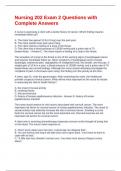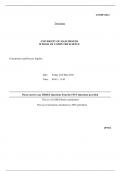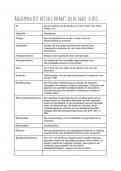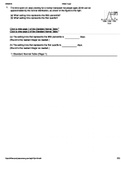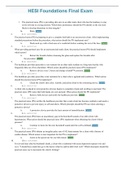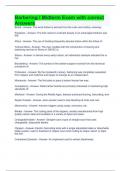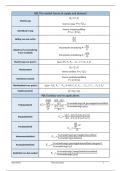Exam (elaborations)
Nursing 202 Exam 2 Questions with Complete Answers
- Course
- Institution
A nurse is assessing a client with a family history of cancer. Which finding requires immediate follow-up? A. The client has gained 10 lb (4.5 kg) over the past year. B. The client reports knee pain upon rising. C. The client reports a feeling of a lump in the throat. D. The client has a bloo...
[Show more]
